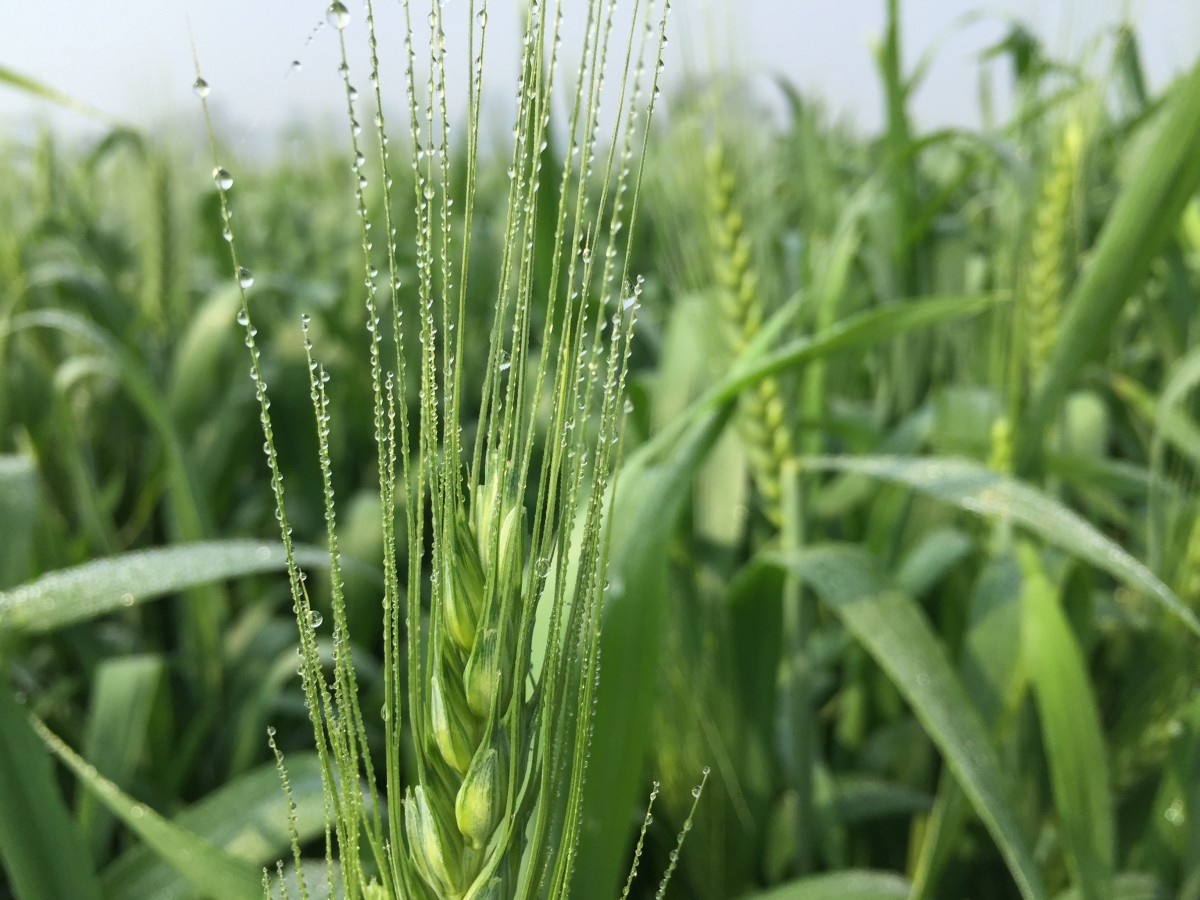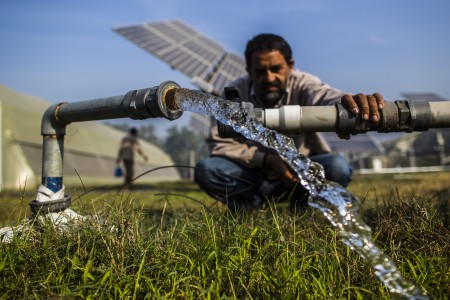As part of WLE's partnership with The Economist's Sustainability Summit: Technology and the race for resources in Austin, Thrive blog has published the post below in order to add to the discussion on the role of science and technology in catalyzing shifts toward sustainability in the private sector and beyond.
Of $140 billion reported for damages in all economic sectors between 2003 and 2013, agriculture has been estimated to account for $30 billion of losses, with floods accounting for 60% of crop damages.
Smallholder farmers are disproportionately vulnerable to losses such as crop damage from floods and droughts, and they have so far had no option to insure their assets. Now, a new combination of satellite technology and historical data might help insurers in the developing world to offer smallholders affordable insurance products that help increase their resilience to climate change impacts.

New technology opens doors to resilience
In the past, smallholder farmers in India have only had access to poor insurance products, characterized by insufficient risk coverage and delayed and inaccurate damage assessment. Today, 95 million farmers are still uninsured and only 6% are voluntarily purchasing coverage. Insurance payouts for crop damage are often delayed by a year, and are left subject to the whims of local insurance officers.
Part of the problem is that insuring individual farmers and assessing the damage done to each farm is prohibitively time consuming and expensive for insurance companies. Unless the transaction costs can be reduced, by improving data collection and payout processes after a disaster, providing affordable crop insurance options for smallholder farmers is out of the question.
Luckily, some of these challenges can be overcome with innovative use of technology and favorable government policies.
Index-based insurance
WLE, via its lead center IWMI, and the CGIAR Research Program on Climate Change, Agriculture and Food Security (CCAFS), have been working to develop affordable crop insurance for smallholders. The turning point has been to be able to accurately predict yield loss after droughts or floods using satellite and public data. This approach can reduce the transactional costs for insurers and make crop insurance for smallholders a viable product.
This new product, called index-based insurance (IBFI), is planned to be trialed in Bihar, India, later this year. IBFI integrates hi-tech flood modeling, satellite imagery, and on-the-ground information to predetermine environmental risks, such as floods or droughts, to farmers in an accurate, cost effective, and speedy manner. The objective is to develop effective payout schemes for low-income, flood- or drought-prone communities.
In developing this product, determining crop yield using satellite images has been a real break through. Being able to calculate how much crop yield a farmer will have can enable insurance companies to cheaply and quickly determine: a) how much to insure for; b) the extent of loss after a disaster and; c) how much to pay affected farmers.
/index.jpg?itok=eJCIgCX2)
How it works
The key is establishing a vegetation index. This is done by comparing highly detailed satellite images of vegetated cropland with information collected on the ground about the agricultural productivity of farms. Government departments have been measuring crop yield for years, using techniques like crop cutting experiments (CCE), in which a square meter of crop is cut and weighed to determine yield. By comparing the satellite images against these ground-tested methods, scientists can create a correlation between the crop yield and the vegetation coverage in the image - thereby creating a vegetation index.
By using multiple sources – including remote sensing data, plot-specific geo-tagged crop growth information, and crop production data from government departments – to create this vegetation index, the potential crop yield of huge swaths of land can be precisely determined. All of this can be done using freely available satellite data and open software, like Google Earth.
This means that insurance companies and governments can remotely, quickly and accurately determine the amount of potential crop yield on a farm, allowing them to set the premiums for the crop insurance, just by looking at an image of the vegetation coverage.
It also means that the insurance companies can quickly determine how much potential crop was damaged and lost after a flood, drought, or other disaster event. They can not only measure the extent of the crop damage, but the specific location to the village or farm level. This allows them to determine the insurance payout for each area.
In the case of floods, IBFI uses flood modeling tools that combine inputs from satellite rainfall estimates, river characteristics, and digital elevation models to assess flood depth and duration. These models allow insurance companies to develop pre-determined thresholds for when a payout is due, based on historical data on previous flood events and related economic losses.
Researchers tested the use satellite images to assess crop damages during 2016. In response to a major flood in August last year, Bajaj Allianz, an insurance provider in Bihar, India, asked the WLE and IWMI research team for help with estimating the total crop damage. Researchers used satellite images to quickly and precisely assess rice and maize losses in each administrative unit (at block level) across an area of 30,357 ha. With these estimates, Bajaj Allianz was reportedly able to cover farmers’ losses with timely payouts of around USD 34 million.
The role of data
Without high quality data, insurance companies cannot offer reliable and cost-effective protection, which is particularly critical for poorer, vulnerable smallholder farmers. Governments have a key role to play in collecting and developing this data market infrastructure by coordinating investment in data as a public good. This has historically not been particularly strong in India.
The private sector can contribute to improved data collection and management, either by taking on specific data collection tasks or by paying to use the data collected by the public sector. The latter can provide the incentive needed for governments to invest in public databases. Since indices can be based on a combination of yield, satellite and weather data, and each data type has advantages and disadvantages, combining different types of data can lead to products that offer both speed and reliability in a cost effective manner.
Moving ahead
Because disruptions to agricultural production can affect an entire country, crop insurance is critical, not only for smallholder well-being, but for national food security and stability. IBFI has the potential to give 1 million farmers access to agricultural flood insurance by 2025 and create a market of INR 10 billion in flood protection. Scaling up this initiative could increase the resilience of smallholders and contribute to the sustainability of agri-food system in the future.
In order for this to become a reality, data quality needs to be good and well audited; otherwise, it won’t be useful to insurance companies that have high standards for data verifiability. Governments can also show support for crop insurance schemes by subsidizing agriculture insurance programs when they first start, and while investments are being made in market data infrastructure. Governments can then offload the risk to insurance markets over time as data quality improves. By working together, the public and private sector can create a more secure future for their important food producers.




















Comments
Very interesting post! Here is related article in recently published by The Guardian on the importance of using satellite data in these insurance schemes (in the case of Kenya): https://www.theguardian.com/global-development/2017/apr/25/satellite-ima...
Thank You Justin for sharing the article. Very useful information and the need for better information, tools and approaches that can safeguard vulnerable communities from cyclical floods and droughts.
Index Based Flood Insurance (IBFI) article with details on the product and implementation published in Geospatial World Magazine
https://www.geospatialworld.net/article/satellite-based-insurance-protec...